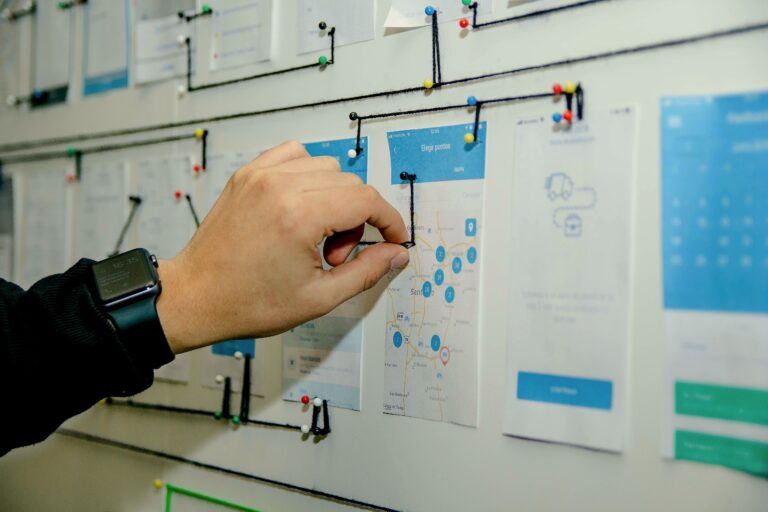
The customer journey map can often glean the most valuable insights when it comes to understanding the common points of friction faced by potential clients and identifying areas where customer experience could be improved or even created.
While it isn’t an intuitive process, it is essential to place yourself in the shoes of your existing customers. What are their challenges on the path to purchase? Is simple objection such as lacking information keeping you from making a sale? Or is it a macro moment where you’re competing to fix their immediate need in an instant? Customer journey mapping can help you get those answers and discover more about your brand in the process.
Remember what you’re assessing
Before we dive deep, keep in mind what it is you’re trying to assess. In exploring and visualizing the customer journey, we are aiming to understand:
- Behavior/Value: What your customer is trying to achieve
- Attitude: How your customer feels/communicates about their goal
- On-Stage Experience: Who/what your customer is directly interacting with daily
- Off-Stage Experience: Who/what needs to be in place, but isn’t currently being used to aid the experience
Benefits of Customer Mapping

The benefits of mapping out the customer journey are all rooted in strategy. There’s no single journey, there are always multiple. So, it is important to understand who you are selling to and what type of objectives you’re trying to reach as a brand. By first identifying where customers begin their interaction with your brand or business, you’ll be able to set yourself apart from competitors.
Sometimes the journey seems long, but is it logical? Determine whether each step is absolutely detrimental to making a sale. You’ll be able to see and understand where your customers may be getting held up, therefore revealing gaps in your process. If you go through the entire journey and focus on the different needs at various stages of the buying funnel, you’ll be able to better prioritize resources where they’re needed the most and can result in the highest ROI for your business.
Customer journey maps can also help you assess impact, how is your budget being affected by your existing journey? Additionally, you’ll be able to diagnose issues and opportunities making way for more innovation and the ability to design a better experience. This customer journey map will also allow you to determine where new marketing automation tactics may make more sense than other touchpoints.
So, enough about the benefits. How do you get started? The best way to achieve results is by following these 6 steps toward mapping out your customer journey:
Step 1: Map by objective
As we mentioned early, mapping your customer journey is equal parts understanding their journey and your overall business goals. You’ve gotta think about their on-stage and off-stage attitudes and experience. If you’re simply just writing down touchpoints, you’re missing about 40% of the overall customer journey.

Why are you making this map? Are you trying to understand where you’re leading customers and how they may be missing their destination? Do your internal marketing and messaging goals line up with your overall business objectives? Are sales and marketing aligned as they should be?
It may be helpful to identify all of your needs versus wants when determining what you’d like to accomplish as a business, which in turn can help you truly flush out objectives. Remember, you cannot focus on who your persona is if you don’t know what you want them to accomplish through your brand, so this step is integral to the process.
Step 2: Write your buyer personas
This is likely a fan favorite, but rightfully so because this step is so useful in really visualizing who your customer is. Focus on what your regular customers, big spenders and new customers are like. This persona should go beyond your marketing segment, but should also include identifies such as their name, age, job role and personal/professional ambitions. Information for these personas can be gathered through demographics data or event just conducting customer interviews. Keep in mind these personas apply to you whether you’re B2B or B2C, so don’t shy away if you have multiple customers for each opportunity.
While marketing automation can oftentimes make you feel able to track your customer’s every move, you won’t really know what they’re thinking or what they need in a given moment. Figuring out who they are, what they like, who they aspire to be, and what truly makes them decision-makers is the best place to start when writing personas. Consider surveying some existing customers to inform your findings with some real-life experience.
Keep in mind that while research and questionnaires are a great place to start, you’ll be left with several customer personas. Focus on the tie that binds everyone to each other and go from there. You’ll quickly notice trends when it comes to their goals and opinions of the brand, so create up to 6 personas and narrow down to those 3 that resonate best.
Step 3: Identify all possible touchpoints
You may have inadvertently done this in the first step, but it never hurts to revisit this step over and over. You’ll want all of your goals to be crystal clear, so that you can then divide where these desired actions are happening.
Social media might not be as effective as email marketing in terms of converting leads, but perhaps engagement is more positive on other platforms. Another surprise might be the lack of touchpoints, this could be that your customers don’t hang around your website long enough to create useful data or that you’re missing just touchpoints on the path to purchase.
The goal is to clear the path and build the bridge where it is needed the most, so your customers are delighted by their experience enough to become fans of your brand.

Step 4: Pick a map that works best for your business
Now that you’ve got more information than you possibly thought was available about your customers and their experience with your brand, it’s time to visualize it. What lens do you want to view this data through? The type of map you choose to visualize the journey all depends on your perspective and objectives. Here are a few options for you to decide from:
- Current state: this is the most common map as it allows you to visualize the psychographics, emotional, behavioral, and existing experience of your current customers and how they’re interacting with you at present time.
- Day-in-the-life: while this is a more aspirational approach, it allows you to understand how your brand fits into your customer’s daily life. Where could your product come in and improve their day with one simple interaction? Details, habits, and activities should be mapped alongside their existing interactions with your brand.
- Future fortune: logically, you’ve looked at the past and the present, so this step is exactly what you hope to achieve in the near future. You’ll want to understand your customer so well you’ll be able to draw inferences, make predictions about their behaviors, thoughts, and purchase patterns. This takes the longest amount of time to create as it is almost a conglomerate of the current state and day-in-the-life mapping approaches.
Once you’ve completed this step, the real work begins. You’ll want to start narrowing your focus by persona for the next step. Keep this mapping in mind to decide how you’ll create a measurement framework later. It’ll save you time when you’re ready to implement innovation and new KPIs as they relate to your customer.
Step 5: Plot your data points and assess

This step directly addresses the question: what does the customer journey look step-by-step? What are your moments that matter the most? You’ll literally want to plot the data in and focus on writing out existing actions and when they’re happening. You can layer on your findings from the previous step at a later stage, but this one is all about taking a look at actions, processes, attitudes and needs.
Once this step is complete, you’ll be able to follow the plots as your customer would. Take note of pain points and moments of misinformation. Don’t forget to look at your brand as a brand new experience, don’t bring in your personal bias or it’ll be difficult to see where the drop-offs are happening.
Step 6: Fine-Tune and always ask yourself ‘What is next?’
Well, by this point you should have completed all of the hard work and have a very reliable map in your hand. Keep in mind that this will continue to be a work in progress. No customer experience map stays the same for too long, the customer experience is constantly evolving, so you’ll want to follow these steps a few times per year.
Some of the most common use cases for journey mapping include:
- Assessing the current state of your customer journey to understand and diagnose issues.
- Understanding what the future state of your custom journey should look like to design, redesign, and create better customer experiences.
- They can serve as a blueprint for implementing changes and scaling best practices.
- A means to improve communication with all of your customers and sales teams.
In the long run, you’ll begin to realize that your work paid off and you’re garnering attention from customers soon to become brand loyalists. Remember that gaining customer trust is more important than ever, so set the bar high and don’t be afraid to see what happens after their first purchase.
GNW Consulting offers the resources to help with your journey mapping
GNW Consulting is here to help you map out your customer journey. We know you’ll achieve tremendous value from following these simple steps, but understand that it can be a lofty job. Our expert strategists can help you identify the gaps in your existing business tactics and link your key operational touchpoints to your journey. Contact us today for a consultation, or simply reach out to learn more about our process.